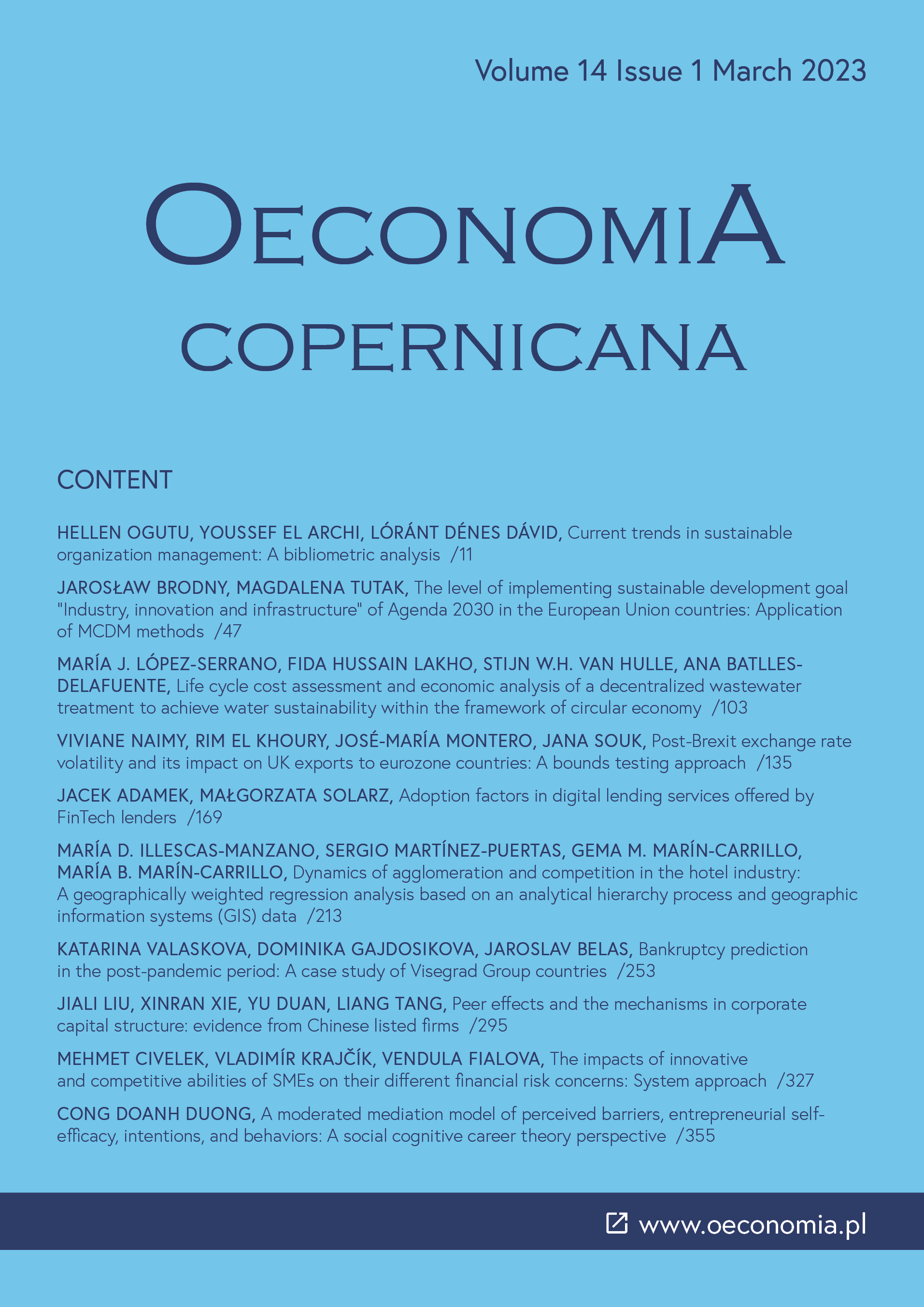The level of implementing sustainable development goal "Industry, innovation and infrastructure" of Agenda 2030 in the European Union countries: Application of MCDM methods
The level of implementing sustainable development goal "Industry, innovation and infrastructure" of Agenda 2030 in the European Union countries: Application of MCDM methods
Author(s): Jarosław Brodny, Magdalena TutakSubject(s): Supranational / Global Economy, Energy and Environmental Studies, Social development, EU-Legislation
Published by: Instytut Badań Gospodarczych
Keywords: sustainable development; innovativeness; EU–27; MCDM methods;
Summary/Abstract: Research background: Sustainable development of the modern world represents an opportunity to preserve economic growth and technological progress, as well as social development, without limiting the possibilities of this development for past generations. The directions of this development are included in the 17 goals and 169 tasks of the 2030 Agenda for Sustainable Development. The achievement of these goals and the implementation of the adopted tasks is a huge challenge for individual countries and regions. This also applies to the European Union (EU), where economic development is closely linked to environmental protection and social inclusion. Of key importance in this context is Objective 9 of Agenda 2030, and thus its level of implementation in the EU-27 countries is the aim of the research presented in this paper.Purpose of the article: The research involved assessing the level of EU countries in terms of building stable infrastructure, promoting sustainable industrialization and fostering innovation, i.e., the main areas of Goal 9 of Agenda 2030.Methods: The assessment was based on the EU?27 countries' sustainable development index (SDG9) determined with the use of 14 indicators characterizing these areas between 2015?2020. The basis of the developed methodology was a multi criteria decision making approach (MCDM methods). TOPSIS, WASPAS and EDAS methods were used to determine the sustainability index, and the Entropy, CRITIC and standard deviation (SD) methods were used to determine weights for the adopted indicators. In addition, the use of the Spearman's and Kendall's Tau non-parametric tests enabled the analysis of the relationship between the SDG9 index and the basic economic, environmental and energy parameters, as well as the digitalization of the countries under study.Findings & value added: The results show that the EU?27 countries vary widely in terms of implementing Sustainable Development Goal 9 of Agenda 2030 over the analyzed period. Now, the most advanced in this respect are Denmark, Germany, Luxembourg, the Netherlands, Finland, and Sweden. By contrast, substantial problems are found in Bulgaria, Greece, Portugal, and Lithuania. The results also provide an opportunity to trace changes in the value of the designated index in individual countries, and in groups of countries of the "old" and "new" EU. These results significantly enrich the knowledge of the effectiveness of implementing Goal 9 of Agenda 2030 in the EU?27 countries and the relationship between the development of individual countries and sustainable development economy. These findings can also be used to create new EU?27 strategies for sustainable and solidarity-based development of the whole EU. In addition, the results can be helpful to decision-makers as they highlight important indicators related to innovation, industrialization and infrastructure that should be considered when formulating a country's sustainable development strategy. The added value of the study is the research procedure presented, which can be used in analyses on the study of various issues related to sustainable development for other groups of regions.
Journal: Oeconomia Copernicana
- Issue Year: 14/2023
- Issue No: 1
- Page Range: 47-102
- Page Count: 56
- Language: English

